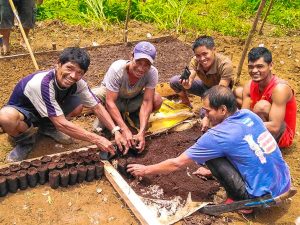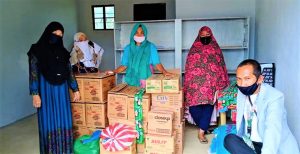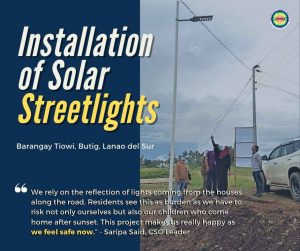
January 24, 2025, Sibagat, Agusan del Sur
In the rolling hills of Barangays Sinai and Kolambugan in Sibagat, Agusan del Sur, an ambitious vision became reality with the inauguration of two renewable energy-powered abaca processing facilities. These state-of-the-art facilities enhance abaca production, improve processing efficiency, and minimize environmental impact through sustainable energy solutions. Marking a significant milestone in abaca industry development and community empowerment, they are the first of their kind in the Philippines—and possibly the world—setting a new benchmark for renewable energy integration in agricultural processing.
A Collaboration of Key Stakeholders
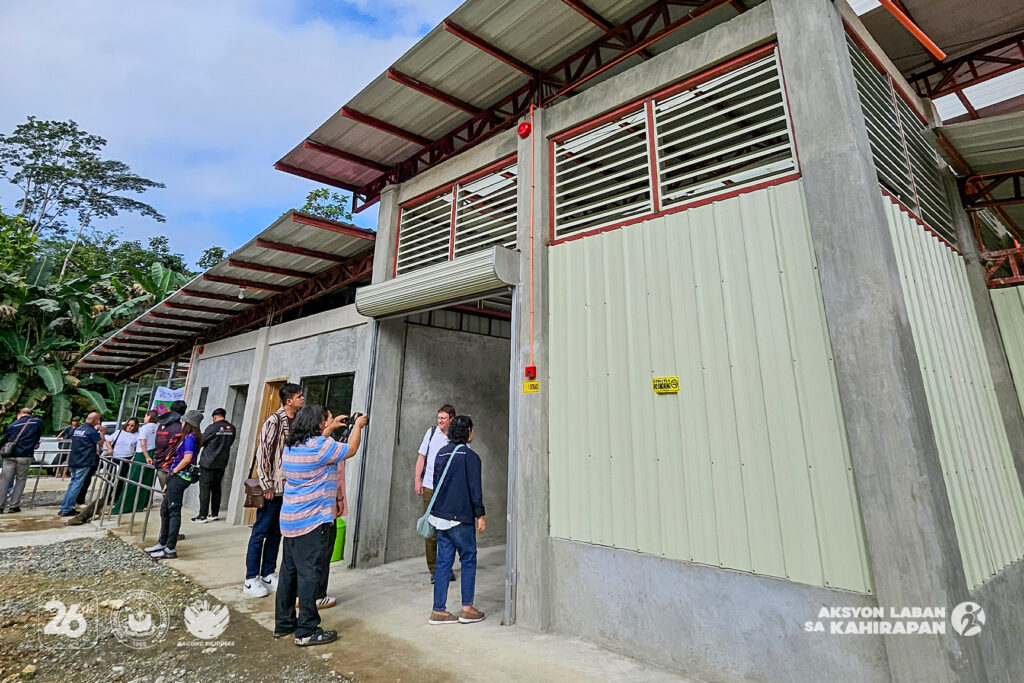
On January 24, the grand opening of the Model A and B Renewable Energy-powered Abaca Processing Facilities in Barangays Sinai and Kolambugan, Sibagat, Agusan del Sur, was met with a deep sense of accomplishment and optimism. The project represents a collaborative effort between and among local and international civil society and non-government development organizations, international donor government and non-government agencies, local and national government, academe, and community partners.
The establishment of the RE-powered abaca processing facilities is part of the GreenFiber Project, a 3.5-year project that runs from November 2022 to April 2026, implemented by Ecosystems Work for Essential Benefits, Inc. (ECOWEB) in partnership with the Arbeiterwohlfahrt International e.V. (AWO) International and with funding support from the Bundesministerium für wirtschaftliche Zusammenarbeit und Entwicklung or Federal Ministry for Economic Cooperation and Development (BMZ), and Aktion Deutschland Hilft (ADH) or Germany’s Relief Coalition. The project is implemented in close cooperation with the Municipal Local Government Unit (MLGU) of Sibagat, the Tribal Communities of CADT 093 and SibLas AD, the Philippine Fiber Industry Development Authority (PhilFIDA) Region 13, and Caraga State University (CSU). Other partners include the Agusan del Sur State College of Agriculture and Technology (ASSCAT), the National Commission on Indigenous Peoples (NCIP), and the Department of Trade and Industry (DTI) of the Caraga region, among others.
The event was graced by PhilFIDA Executive Director Arnold “Ali” I. Atienza who represented the Department of Agriculture Secretary, Hon. Francisco Laurel Tiu Jr., and National Anti-Poverty Commission (NAPC) Assistant Secretary Mary Rose C. who represented Secrtary Lope Santos III. The Climate Change Commission Secretary Robert E.A. Borje also extended inspirational video message.
Sibagat Municipality Vice Mayor Maria Liza L. Evangelista with members of the municipal council and heads of municipal key offices warmly welcomed all project partners and event participants. Other regional and provincial government agencies were represented by the PhilFIDA CARAGA OIC-Regional Director Samuel M. Nacino Jr., Department of Labor and Employment (DOLE-13) Assistant Regional Director Raymond Fel F. Sajor, Department of Energy (DOE) Mindanao Field Office representatives Marloo Ray N. Belviz and Wendelyn D. Santander, Department of Science and Technology representative Wenceslao C. Tianero Jr., DTI Agusan del Sur Provincial Director Marson Jan S. Dolendo.
Community partners were represented by the leaders from the Abaca Production Guilds and cooperatives from the covered 15 barangays of Sibagat. WSTC Chairman CADT-903 (IPMR) Datu Lumad II Samuel B. Behing also represented the partner Indigenous communities in Sibagat.
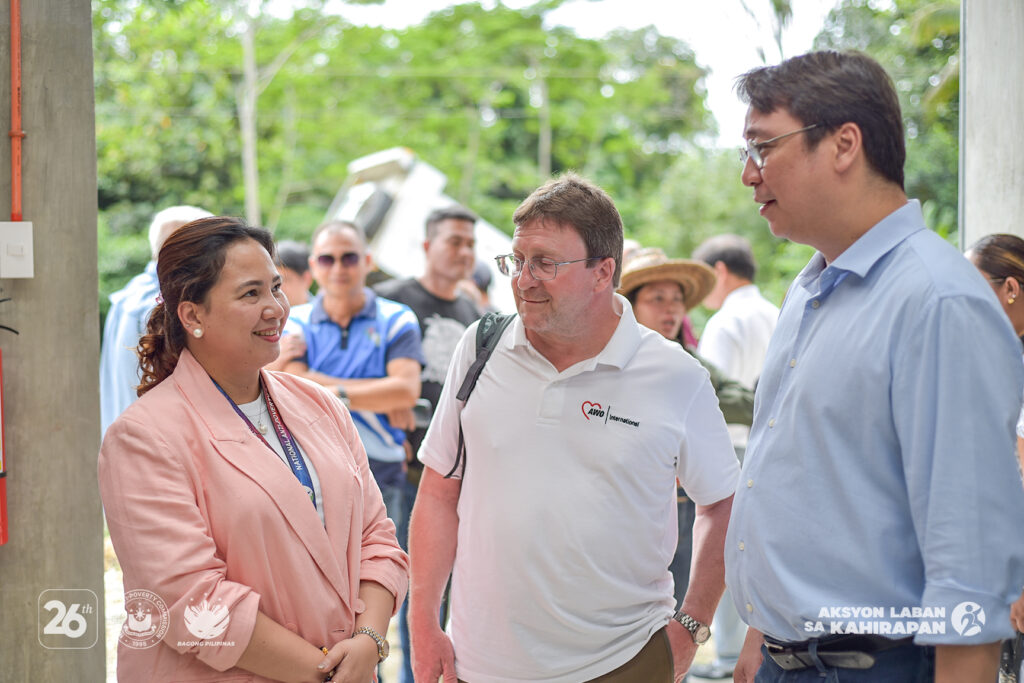
Datu Lumad II Samuel B. Behing, CADT-903 Chairman and Indigenous Peoples Mandatory Representative (IPMR), expressed awe at the development. “Who would have thought na yung area na ‘yun na bundok ay may matatayo na ganitong building?” (Who would have thought that an area like this, in the mountains, would have such a facility?) His words captured the transformative impact of the project—not just in infrastructure but in the lives of the people it serves.
A New Dawn for Abaca Farmers
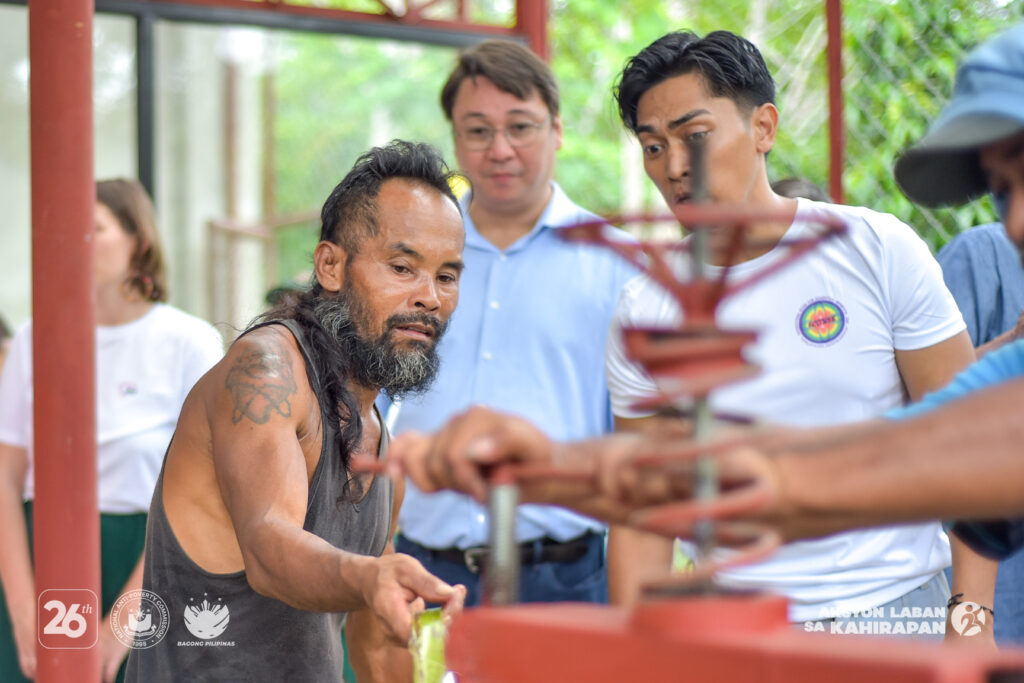
PHILFIDA Executive Director Arnold “Ali” Atienza underscored the need for better industry opportunities for local farmers, sharing a striking personal anecdote: “I once bought an abaca carpet in London worth 200,000 pesos. Imagine that—this valuable product originates from places like Agusan, yet our farmers do not fully benefit from its worth.” In his message, Executive Director Atienza emphasized PhilFIDA’s commitment to collaboration and outreach, ensuring equitable benefits for farmers and stakeholders. He highlighted the potential of abaca through value-adding and product improvement, noting its high market price as a key driver for uplifting farmers’ livelihoods and fostering a resilient abaca industry.
Recognizing this disparity, Atienza pledged PHILFIDA’s commitment to supporting abaca farmers, ensuring fair market access, and helping to establish a sustainable industry where communities receive equitable shares of the economic gains. “Allow me to do something about it. I cannot promise everything, but I promise PHILFIDA will work for the farmers, for the stakeholders, and to make sure that everyone could have a fair share of the industry.”
For decades, abaca farmers in Agusan del Sur have struggled with limited market access and fluctuating fiber prices. NAPC Asec. Mary Rose C. Villaflor highlighted the importance of addressing these gaps: “We’ve long known that Agusan del Sur has high-value commodities like abaca, but farmers have been at the mercy of traders. With these facilities and the support of agencies like AWO International, we can bridge the gap between producers and markets, capacitate farmers, and introduce new product innovations.”
DTI Provincial Director Marson Jan S. Dolendo emphasized the role of innovation: “There is still a demand for abaca products. What DTI is telling us is we need to ride on the trend. Let’s develop other products that are trending now. That’s how DTI can help out.”
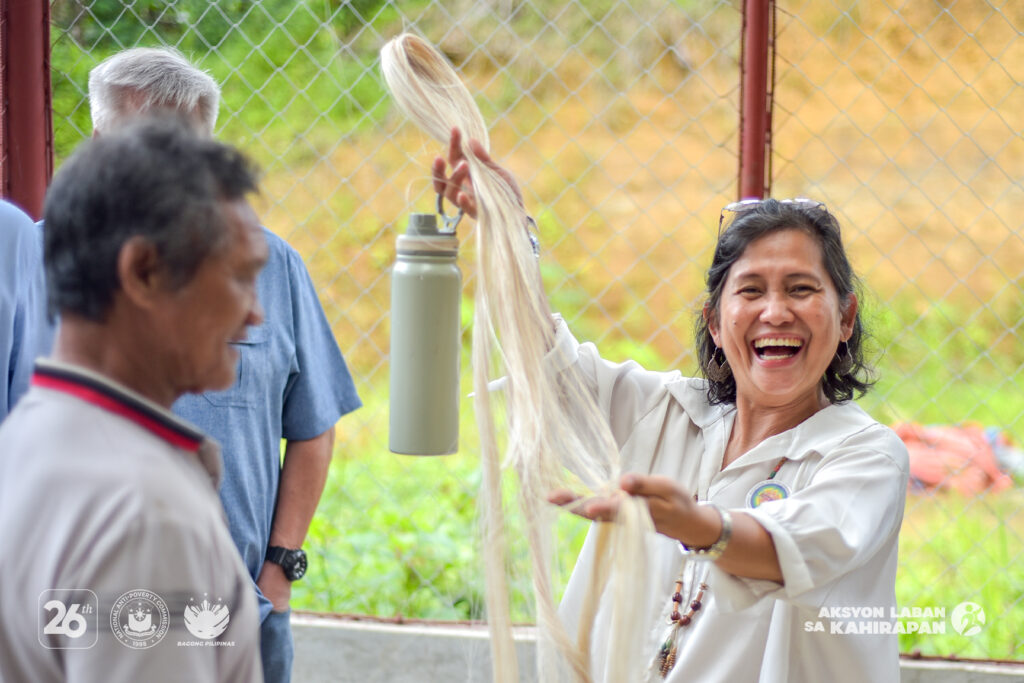
Renewable Energy and Sustainability at the Forefront
The facilities, which integrate renewable energy technology, aim to reduce reliance on fossil fuels while maximizing efficiency in fiber extraction and processing. By utilizing sustainable power sources, these centers align with the broader national agenda of promoting green energy solutions within agricultural industries.
Climate Change Commission Secretary Robert E.A. Borje emphasized the transformative role of renewable energy via a video message, stating, “This is a step forward in the right direction as we aim to achieve a climate-smart, climate-resilient, low-carbon, and sustainable economy for the Philippines.” He highlighted that the hybrid solar-powered facilities will not only improve Sibagat’s position in the abaca industry but also strengthen the renewable energy landscape in the country. “Our energy choice is crucial to strengthen and speed up efforts to reduce carbon emissions, to modernize agroforestry, to improve livelihoods, to protect and manage our environment, and to attract investments in a core critical industry,” Borje added.
A Future Built on Collaboration
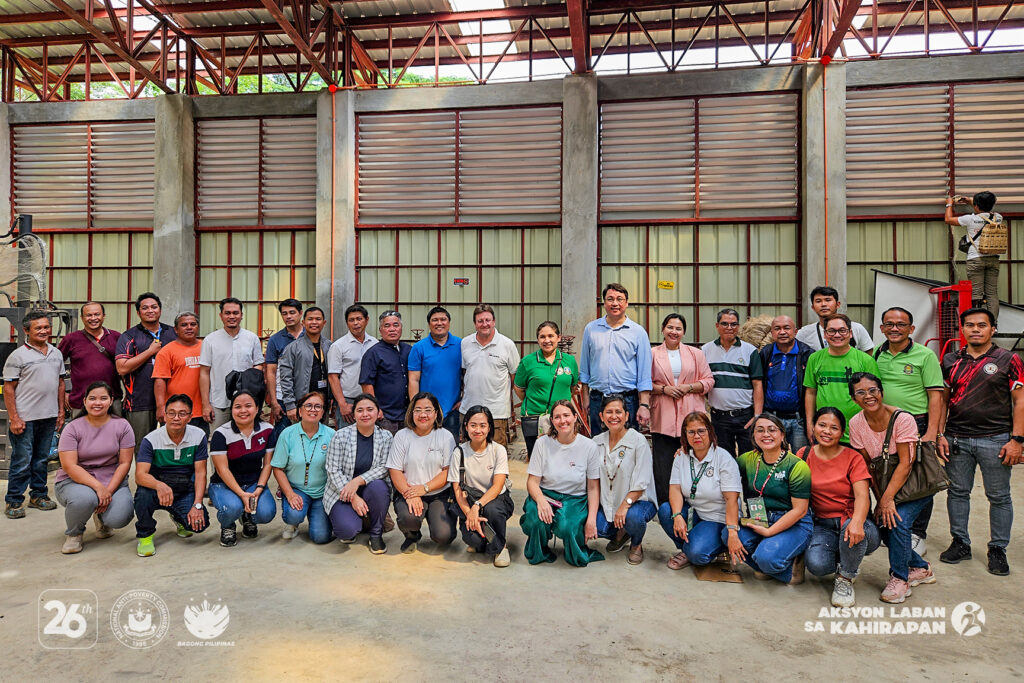
The event also showcased the power of collective action. Representatives from the Department of Energy (DOE), Department of Trade and Industry (DTI), Department of Science and Technology (DOST), Caraga State University (CSU), Agusan del Sur State College of Agriculture and Technology (ASSCAT), and the National Commission on Indigenous Peoples (NCIP) reaffirmed their commitment to the project’s long-term success.
Marloo Ray N. Belviz, Senior SRS from the DOE Mindanao Field Office, emphasized the department’s commitment: “In the DOE, our mandate is to promote renewable energy and development. For the sustainability of this project, hopefully the community will adapt. We support this project.”
Dr. Luisito I. Tabada, Chief Presidential Management Staff, speaking on behalf of Caraga State University President Dr. Rolyn C. Daguil, reaffirmed the university’s support: “Since 2020, we have been with ECOWEB providing technical support. Maybe we can do mapping of fibers in Caraga and optimize production and added value so that it can be sustainable. CSU is always there to help.”
ECOWEB’s Executive Director, Regina “Nanette” Salvador-Antequisa, highlighted the importance of collaboration in sustaining such initiatives. “We believe that addressing poverty can only be realized through convergence. Harmonization of programs and projects of different agencies and between national and local government and with international partners. It’s not just about the technology; it’s about the people. And if the community won’t lead and without the government support, this will not really sustain,” she stated.
A Legacy of Strength and Opportunity
To appreciate the significance of this moment, Carino Antequisa, ECOWEB Program Development Advisor, reflected on abaca’s historical journey. “Abaca became an international commodity in 1835 when the British discovered its unparalleled strength. It was once the preferred rigging material for Spanish and American naval ships, and during World War II, the U.S. military recognized its strategic importance. Even today, abaca is used in modern technologies such as drone production.”
With this rich history in mind, the launch of these new facilities represents more than just economic potential—it signifies a continuation of abaca’s legacy. However, Antequisa emphasized the need to fully operationalize the facility and stabilize market connections: “Two hundred years after abaca became an international product, we are introducing a facility that could revolutionize the industry. The challenge now is ensuring its sustainability.”
The Road Ahead
While the facilities are nearing full operational capacity, preparations are underway for an official turnover ceremony. The next steps will focus on capacity-building programs for local farmers, strengthening cooperative networks, and ensuring that the communities are equipped to take the lead in managing and benefiting from these processing centers.
For farmers like Bienvenido Caparida, President of the Sinai Free Farmers Agrarian Reform Beneficiaries Cooperative (SFARBECO), this project is life-changing. “Dili nako matukib akong kalipay. (I cannot express my happiness.) We are grateful that GreenFiber chose Sinai for this facility. The farmers of Sinai deeply appreciate the agencies that made this possible.”
As Sibagat Vice Mayor Maria Liza L. Evangelista expressed, this is just the beginning. “This project follows a vision of uplifting the abaca farmers of the municipality. We are positive that these strategies together with renewable, green technology will work here with the collaboration of various sectors.”
The journey does not end here. As various stakeholders echoed throughout the event, this is only the beginning of a larger movement toward sustainable agriculture, community empowerment, and climate-resilient development. With these new facilities in place, the abaca industry of Agusan del Sur is poised for a future where its farmers are no longer on the sidelines but at the very heart of its success. | Kin Barky E. Tibang

